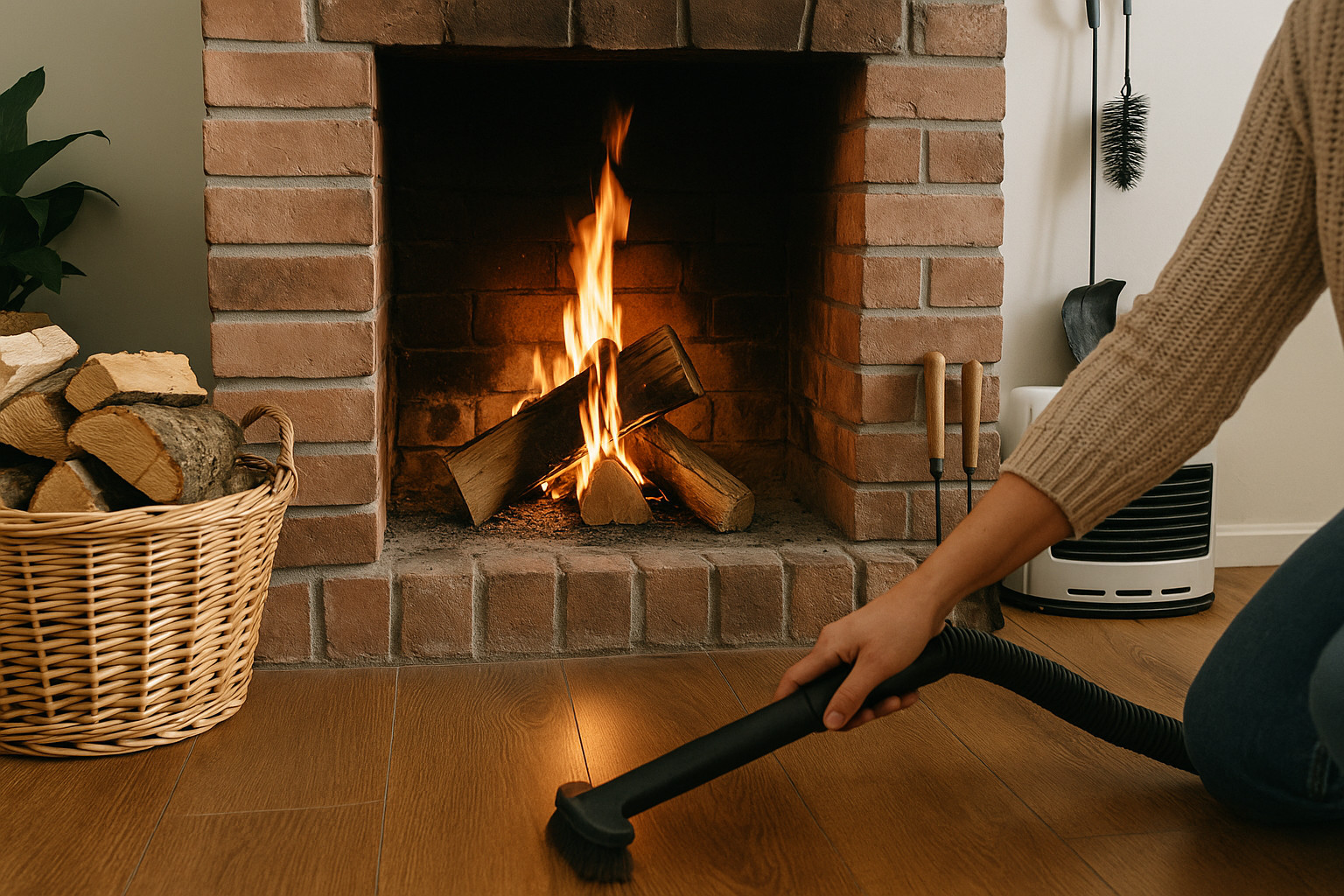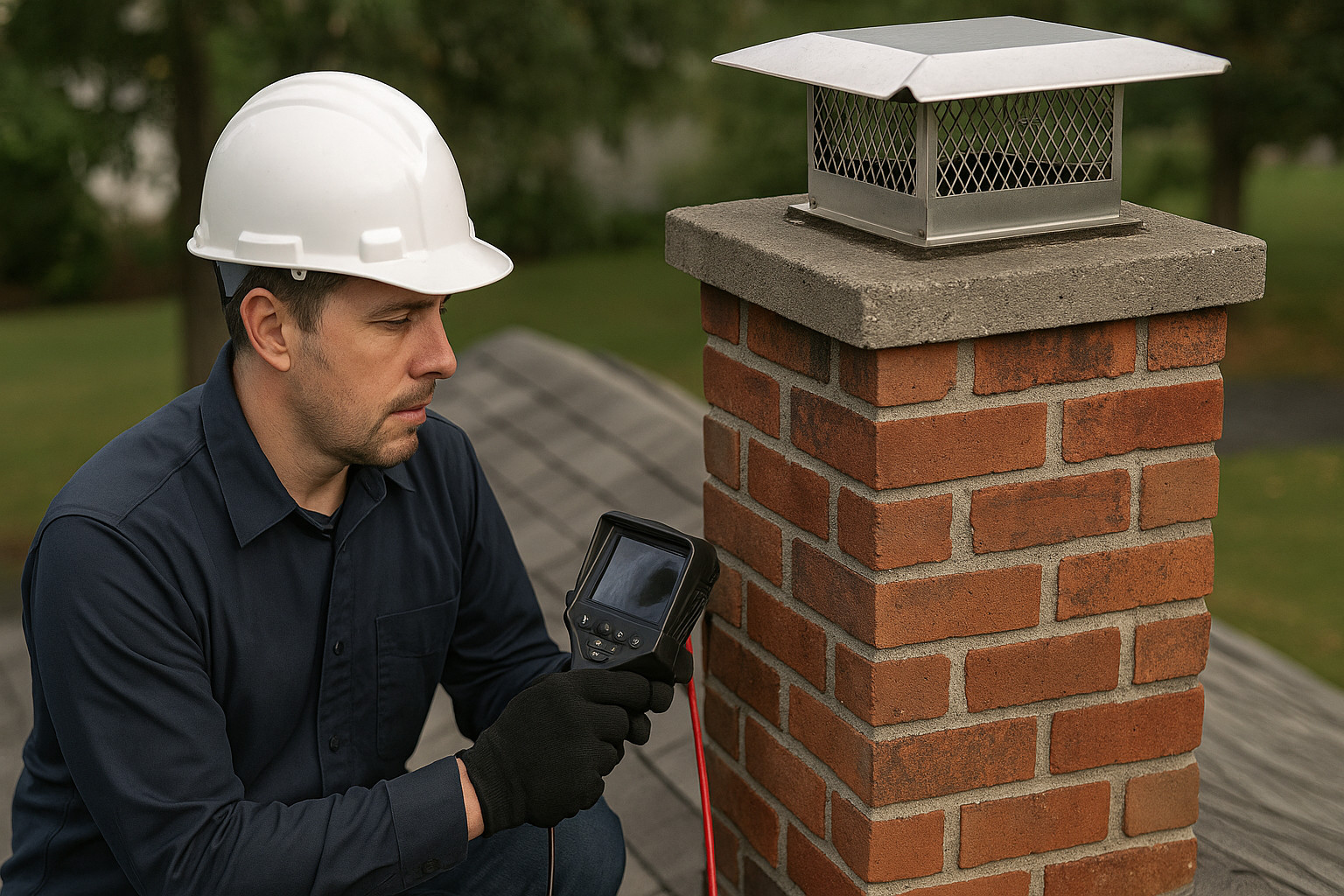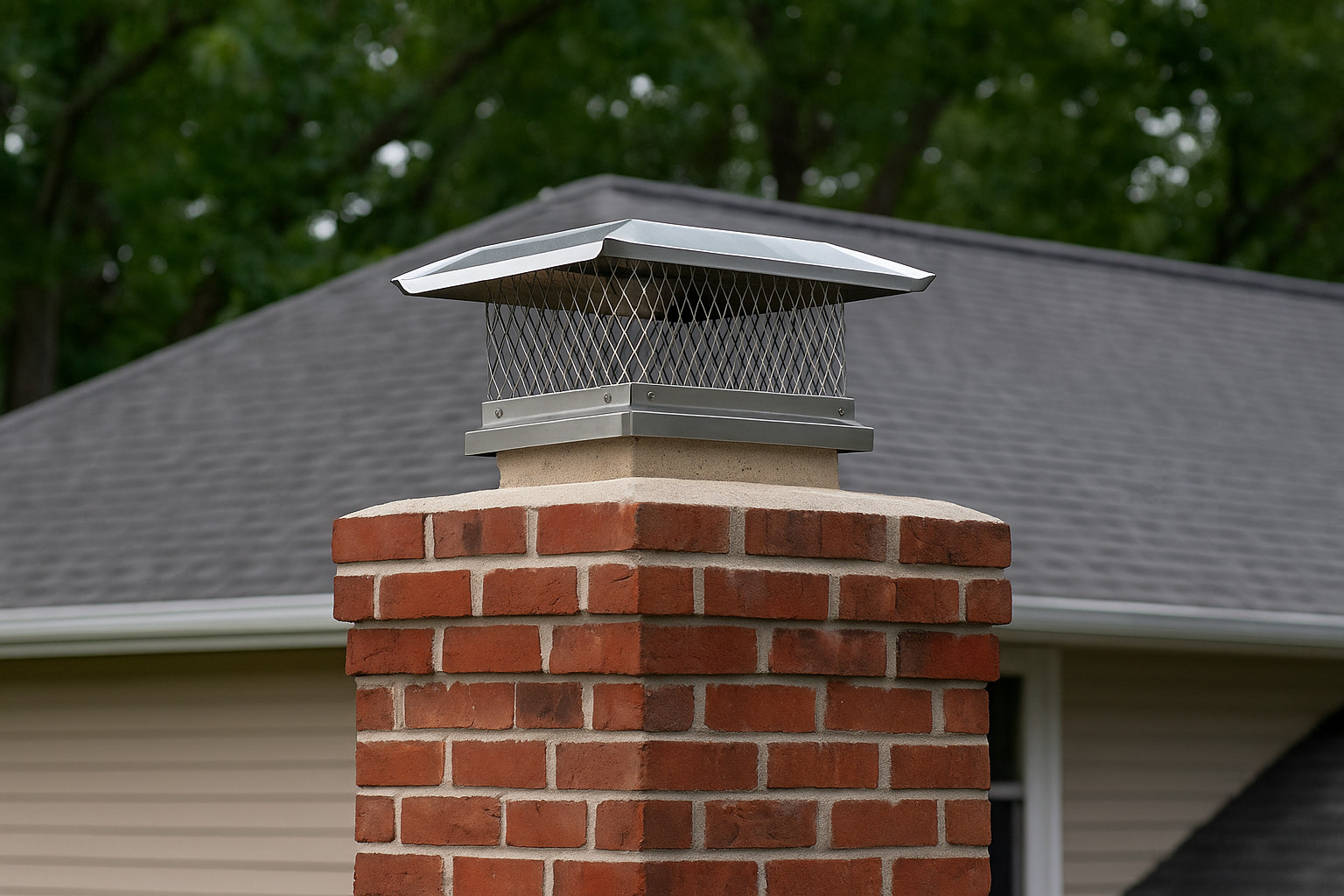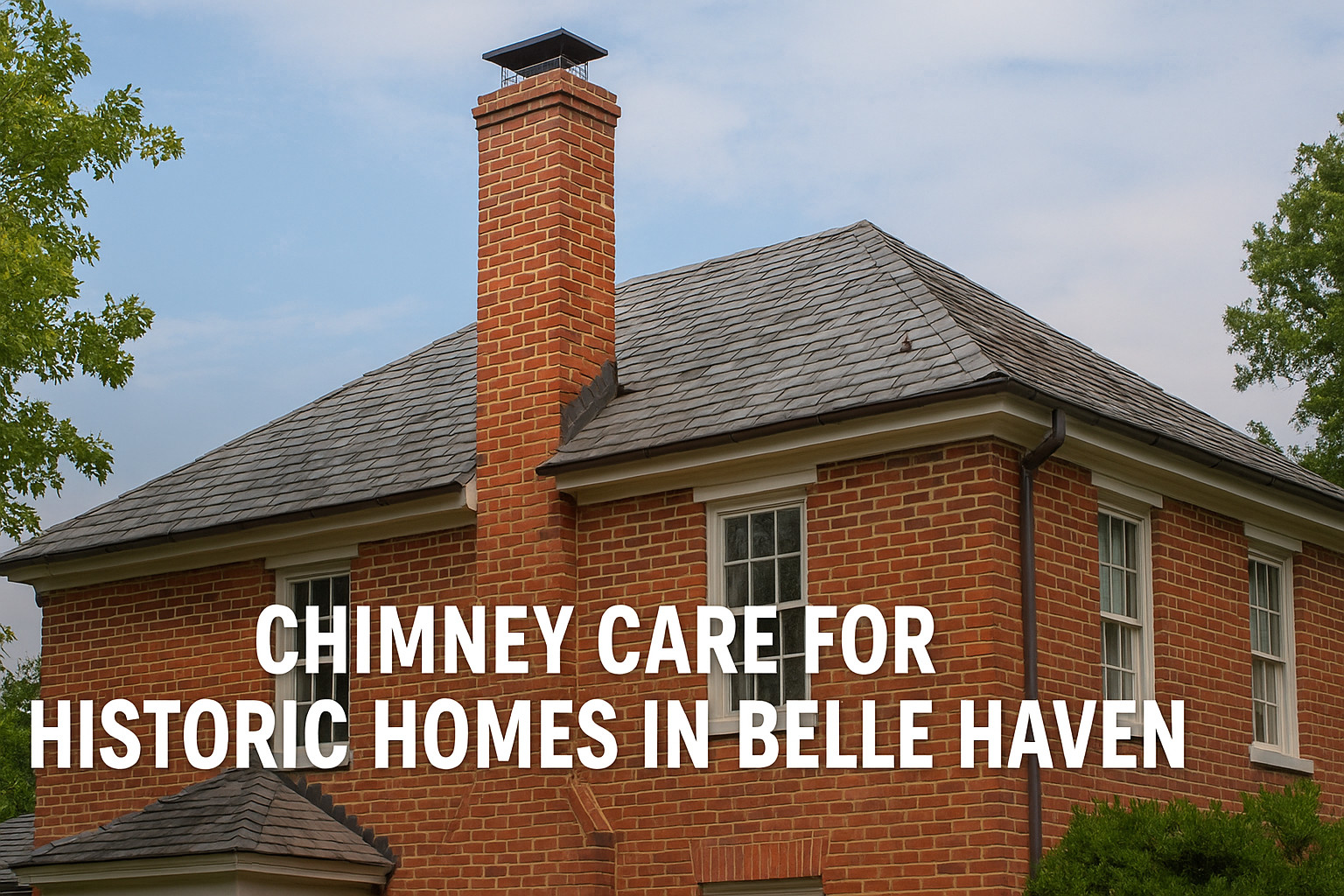Understanding the Role of Chimney Caps for New London Residents
Chimney caps may seem like a small feature, but they play a vital role in protecting New London homes from water damage, animal intrusions, and fire hazards. By keeping your chimney clear and functioning properly, a quality cap helps ensure safety, efficiency, and long-term durability.
Share:
Table of Contents
For homeowners in New London, CT, chimney maintenance is a crucial part of preparing for seasonal changes and preserving the long-term safety of your home. One of the most overlooked, but incredibly important, components of your chimney system is the chimney cap. While it may seem like a simple piece of metal atop your flue, the chimney cap serves as a vital safeguard against the elements, wildlife, and dangerous blockages that can lead to fires or carbon monoxide poisoning. In this guide, we’ll explore the purpose, benefits, material choices, maintenance, and local relevance of chimney caps to help New London residents protect their homes and families year-round.
What is a Chimney Cap?
A chimney cap is a protective covering installed at the top of a chimney flue. Typically made of galvanized steel, stainless steel, or copper, chimney caps serve multiple purposes: they keep rain, snow, and debris out of the chimney while allowing smoke and gases to safely exit. Most chimney caps also include mesh siding to prevent birds, squirrels, and other animals from nesting inside the chimney.
Definition and Purpose
- Prevent water intrusion
- Block animals and debris
- Help reduce downdrafts and wind-related issues
- Contain sparks and embers
These functions collectively enhance fire safety, improve indoor air quality, and extend the lifespan of your chimney structure.
Material Options for Chimney Caps
Chimney caps are available in several materials, each suited for different needs, aesthetics, and environmental conditions. Choosing the right one depends on your budget, location, and how frequently you use your fireplace.
Galvanized Steel Chimney Caps
Galvanized steel chimney caps are one of the most cost-effective options on the market. These caps offer basic protection from rain and pests and are a common choice for homeowners working with a limited budget. However, in a coastal climate like New London where salt air and moisture are prevalent galvanized steel is prone to rust and corrosion. As a result, they tend to have a shorter lifespan and may require frequent replacements or maintenance.
Stainless Steel Chimney Caps
Stainless steel chimney caps are widely regarded as the best overall option for residential chimneys, particularly in regions like New London. Their high resistance to corrosion makes them well-suited for coastal environments where salty air and constant humidity can damage lesser materials. Stainless steel caps are also durable, low-maintenance, and provide long-term performance, which makes them a preferred choice among certified chimney professionals.
Copper Chimney Caps
Copper chimney caps are known for their visual appeal and structural longevity. They develop a natural patina over time, adding a sophisticated, aged look to your home’s rooftop. While more expensive than other options, copper caps are highly durable and offer excellent resistance to corrosion and weather-related wear. Their distinctive look often appeals to homeowners interested in enhancing curb appeal while investing in a product that lasts for decades.
Clay Tile and Other Alternatives
Older chimney systems, especially those in historic homes, may be equipped with clay tile covers. These are typically built into the flue structure and offer limited protection compared to modern caps. While still effective to a degree, clay tile tops lack the advanced features of newer chimney cap designs, such as mesh screens or spark arrestors. Homeowners in New London with such systems may want to consider upgrading for better efficiency and safety.
Best Material Choice for New London Residents
Given https://newlondonct.gov/’s climate and proximity to Long Island Sound, stainless steel is generally the most recommended material. It offers superior protection against moisture damage, salt air corrosion, and the freeze-thaw cycles common in Connecticut winters. While copper is also an excellent option, its higher cost may be a consideration for some homeowners. Ultimately, the investment in a high-quality chimney cap will pay off in extended chimney life, reduced maintenance needs, and improved home safety.
Benefits of Chimney Caps
A well-installed chimney cap offers numerous benefits that go beyond basic protection. For homeowners in New London, where fluctuating weather and coastal elements are a constant factor, these benefits are especially vital.
Weather Protection and Structural Preservation
Chimney caps act as a weather shield, preventing rain, sleet, and snow from entering the chimney. Moisture intrusion can lead to rust on the damper, deteriorated chimney liners, and masonry damage due to freeze-thaw cycles. Without a cap, water can also seep between clay flue tiles, weakening the mortar and causing costly damage to the masonry chimney.
Animal and Debris Prevention
Birds, squirrels, and raccoons often seek shelter in open chimneys, creating blockages and leaving behind nests and waste. These obstructions can restrict airflow, increase the risk of carbon monoxide buildup, and even cause smoke to back up into the home. Chimney caps equipped with mesh screening effectively deter wildlife and help maintain unobstructed air circulation.
Fire Safety and Spark Arrestors
A major advantage of chimney caps is their ability to contain sparks and embers. Spark arrestors built into the cap prevent burning particles from landing on roofs, nearby vegetation, or structures. This not only lowers the risk of a chimney fire but also helps ensure compliance with safety regulations. Chimney caps are a key component of fire prevention systems recommended by organizations such as the Chimney Safety Institute of America (CSIA).
Improved Venting and Energy Efficiency
Downdrafts can disrupt your fireplace’s performance, forcing cold air and smoke back into your living space. A chimney cap helps regulate draft and keeps warm air from escaping when the fireplace is not in use. By maintaining proper draft and minimizing energy loss, chimney caps support HVAC efficiency and help reduce energy bills.
Extended Lifespan of Chimney Components
When moisture, animals, and debris are kept at bay, critical chimney components such as flue liners, stainless steel liners, and the chimney crown are preserved. This protection leads to fewer repairs, longer intervals between chimney sweeping appointments, and more reliable performance of your entire venting system.
Enhanced Aesthetic and Home Value
For homeowners focused on curb appeal, chimney caps can be both functional and visually appealing. Custom options such as copper chimney pots or decorative flue covers add architectural charm. Professional installations by companies like Certified Chimney ensure that the cap complements your home’s exterior while providing superior chimney care.
Overall, investing in a chimney cap is a proactive step in home improvement that enhances safety, performance, and long-term value.
Protection and Performance Advantages
Protection Against Weather Elements
In New London, the coastal climate brings heavy rain, snow, and wind that can quickly deteriorate an unprotected chimney. Without a chimney cap, water can seep into the flue, damaging the liner and causing rust, mold growth, or deterioration of masonry and refractory bricks. As moisture penetrates the chimney system, it compromises not only the flue liner but also the structural ventilation structure supporting the chimney’s function.
Chimney caps with side skirts and mesh offer enhanced protection by diverting rain and blocking wind-driven moisture. These designs help reduce the risk of freeze-thaw cycles and icy blockages that can restrict airflow and harm the flue gases’ exit path. This is particularly crucial in the cold months when fireplace usage peaks in New London homes.
Preventing Debris and Animal Ingress
Leaves, twigs, and bird nests are among the most common causes of chimney obstructions. These materials can severely hinder draft, increase creosote buildup, and heighten the risk of chimney fires. Tight mesh screens on chimney caps are an effective solution, filtering out debris and preventing small animals from gaining access.
In tree-lined neighborhoods near the Thames River and Bluff Point State Park, the abundance of wildlife makes this protection essential. Blocked chimneys also contribute to draft damper failures, poor combustion, and eventual smoke backup inside the home. Keeping your chimney free of debris and nests is a critical part of responsible chimney care.
Reducing Blockages and Fire Risks
Blocked chimneys are a leading cause of residential chimney fires. When creosote builds up on the inner walls of a flue liner, a single spark can ignite a dangerous fire. Chimney caps minimize these risks by shielding the flue opening from foreign materials that exacerbate creosote buildup and restrict ventilation.
To maintain safety, chimney caps should be part of a broader chimney service routine that includes annual cleanings by a certified chimney sweep. Certified technicians use vacuum systems and video scanning technology to identify creosote accumulation, nesting, and structural problems that could otherwise go unnoticed. Tools like chimney cleaning logs can also help between visits.
Enhancing Chimney Efficiency
Chimneys function on the principle of stack effect, which relies on stable draft for efficient performance. Downdrafts interrupt this airflow, pulling cold air into the fireplace and pushing smoke into your living space. Chimney caps help stabilize this process, especially during New London’s windy winter months.
By preventing air turbulence, chimney caps support better combustion, reduce smoke, and help maintain consistent heat levels. For homeowners using wood stoves or gas fireplace systems, a properly functioning chimney cap can even reduce fuel usage and enhance system efficiency.
The Importance of Chimney Maintenance
Installing a chimney cap is only the first step in protecting your venting system. Like any other chimney component, caps require regular inspections and care to perform optimally year-round.
Regular Cleaning and Inspections
Chimney caps should be inspected at least once a year—ideally before the heating season begins. Look for a certified team affiliated with the Chimney Safety Institute of America (CSIA) or the National Chimney Sweep Guild (NCSG). These professionals use camera inspection tools and reproduction chimney sweep hats to access tight spaces and identify issues early.
Maintenance often includes removing animal debris, resecuring loose hardware, and checking for corrosion. Many certified providers, such as Spotless Chimney in New London County, offer Level 2 inspections, which include video evaluations of both the cap and chimney liner.
Impact of Maintenance on Chimney Longevity
Neglecting chimney cap maintenance can result in rust, mesh deterioration, and full dislodgement of the cap during storms. This exposes your system to water damage, masonry erosion, and accelerated wear of components like stainless steel liners and clay tile flue liners.
Routine maintenance not only protects your chimney pot and flue installation but also extends the lifespan of your chimney crown, refractory bricks, and surrounding masonry. Keeping the cap in top condition supports safety compliance and long-term customer satisfaction.
Chimney Cap Repair and Waterproofing
Even the best chimney caps experience wear over time. Repairing minor issues promptly helps avoid costly problems down the line.
Importance of Timely Repairs
Early warning signs such as rust streaks, a crooked cap, or water stains near the firebox indicate potential failure. Timely repairs—tightening screws, resealing mesh, or replacing warped materials—can save you from chimney rebuilding or extensive vent installation down the road.
Delays in addressing these problems may lead to flue gas escape, blocked airways, or even carbon monoxide poisoning. The investment in minor repairs pays off in both safety and savings.
Techniques for Effective Waterproofing
High-quality waterproofing involves applying breathable sealants to the chimney cap, crown, and surrounding masonry. Products must be rated for high heat and outdoor exposure. Pairing the chimney cap with a crown repair or waterproofing service using concrete windshield sealants creates a durable, moisture-resistant barrier.
Homeowners seeking extra protection should consult with professionals experienced in chimney-related service, especially those familiar with New London’s freeze-thaw cycles and coastal conditions. Whether you have a prefab chimney or a traditional masonry system, waterproofing is key to long-term durability.
Stay tuned for more sections coming next, including regional considerations, choosing the right cap, installation insights, and frequently asked questions!
Signs That Indicate a Need for Repair
- Rattling noises during storms
- Rust streaks down your masonry
- Increased draft problems or smoke backup
- Animal noises or visible nests
Regional Considerations for Chimney Caps
New London presents unique weather and architectural challenges that make chimney caps a necessity.
Weather Challenges in New London
Frequent nor’easters, cold snaps, and salt-laden winds put local chimneys at high risk for corrosion and water damage. Homes near the coast need caps made of rust-resistant materials like stainless steel or copper.
Impact on Communal Homes vs. Single-Family Residences
Multifamily properties and older row houses often share flues or have closely positioned chimneys. A damaged or missing cap in one unit can affect others, leading to shared safety hazards or smoke infiltration.
Proper chimney cap installation is particularly important in densely populated neighborhoods like downtown New London, where shared building systems are more common.
Final Thoughts
Chimney caps might be small, but their impact is enormous. They protect your home from water damage, animal intrusions, fire risks, and poor airflow—all while enhancing your chimney’s efficiency and extending its life.
For New London residents, choosing the right chimney cap and keeping it properly maintained is one of the most effective ways to safeguard your property and loved ones.
Schedule your chimney inspection or cap installation with Certified Chimney today to enjoy peace of mind
Article details:
- Published by:
- Certified Chimney CT
- Published to:
- Last modified:
- August 24, 2025
Share:
Continue learning:




